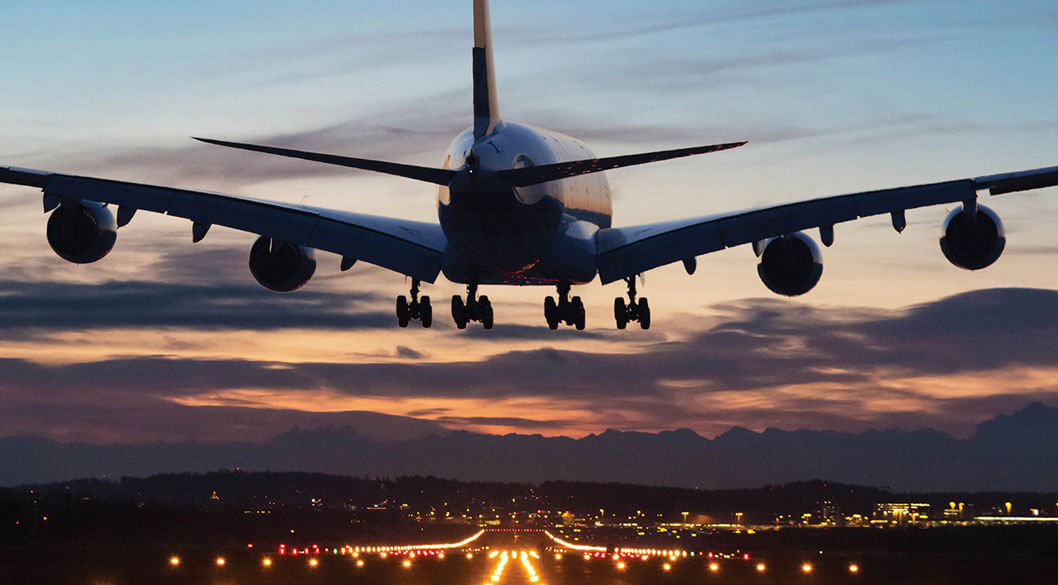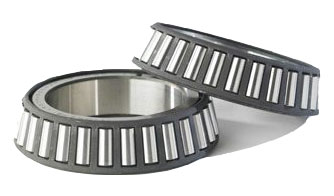Efficiency
Value of Engineering: Supporting Airlines for a Safe Return to Service
Each time a commercial aircraft takes off and lands, there are six million parts and hundreds of passengers all riding on a handful of wheels. Inside almost all of them are Timken® aircraft landing wheel bearings that endure severe conditions to deliver high performance for safe travel.
Paul Eason, a Timken service engineering manager in the UK with 40+ years of aerospace expertise, describes the demands.
“At touchdown, passengers feel a bounce followed by intense vibration,” he says. “That’s the feeling of the loads from a 500-ton airplane transmitting from the airframe to the ground, and that happens through the landing wheels. The wheels go from zero to 170 mph in less than a second. Braking creates extreme heat for wheels that, moments before, were in sub-zero temperatures at 30,000 feet.”
Landing wheel bearings usually experience those conditions multiple times a day. Then the 2020 global health crisis changed things. By mid-April, 16,000 passenger jets were grounded. For landing wheels designed to manage motion in the extreme, there was a new challenge: No motion at all.

Because airplanes are so complex and expensive, they require constant maintenance to preserve them when parked even for a short time. Tires can lose air pressure. Birds can build nests in inconvenient spots. Humidity can damage mechanical parts like bearings.
“There are strict aviation specifications that say wheels must be rotated on a grounded aircraft,” Eason says. “That usually means pushing the plane up and down the runway or jacking it up to turn the wheels.”
But aircraft cost over $100 million, so they’re designed to be in service, generating revenue as many hours of the day as possible.
“There has never been a time in history, really, that we’ve had this volume of fleets sitting around parked,” adds Eason. “Now the industry was asking, ‘with so many aircraft grounded for months, how can we help get aircraft efficiently and safely back in the air? The current standards never accounted for this downtime, and how can we even implement them on this kind of scale?’ That’s when we got involved.”
Timken® Landing Wheel Bearings
Most of the world’s aircraft take off and land on Timken landing wheel bearings.
- Designs meet customer and FAA quality standards.
- Achieve superior performance through tightened tolerances; can accommodate the repeated spike loads of the weight of a jumbo jet during landing.
- Engineered surfaces are available to further improve wear, fatigue and frictional performance.

An Efficient Solution for Global Aviation
Timken began working with a major aircraft builder at their request on ways to ensure grounded aircraft could safely get back in service on short notice. While the U.S. Federal Aviation Administration (FAA) and other regulators around the world set regulations, aircraft builders are responsible for creating detailed maintenance procedures and manuals for the airlines to use when working on their planes.
Eason and several Timken service engineers combined their expertise with the aircraft manufacturer to determine best practices for ongoing preventative maintenance to perform on the grounded aircraft and established an inspection procedure before an aircraft can be put back in service safely transporting passengers. The new procedure includes detailed documentation for disassembly, cleaning, inspection and re-assembly that could be completed by airline maintenance professionals in their storage hangars or runways to support a safe and rapid return back into service.
After their guidelines were complete, the customer turned to Timken service engineers to help pilot the new maintenance and inspection process with an airline. The pilot solidified the effectiveness of the program and it was implemented by the customer.
When asked why Timken was not only the first choice for the customer on this critical new program, but also the global aviation industry’s first choice for new landing wheel bearings, Eason says it’s our knowledge, training and support to the industry.
“We have a deep understanding of both the application demands, and how our products need to be designed, manufactured and maintained to withstand them,” Eason says. “We are in the field, meeting with and training the people that maintain the landing gear. We have a holistic view that customers count on to ensure safety and lasting performance.”
For more examples of how Timken expertise supports civil aviation, click here.
Last Updated: 2021/08/24
Published: 2021/06/28
